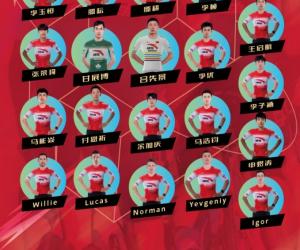
Glenn Dunmire was born to the mountains. Raised a backpacker by park naturalist parents, the 48-year-old climbed Katahdin's Knife Edge at age 6 and summitted Yellowstone's Mt. Sheridan (a 22-mile, 3,300-vertical-foot round-trip) at 7. As a teen, he turned to mountaineering, jumpstarting two decades of cutting-edge alpine ascents. But the peaks took their toll: Dunmire wrecked his left knee and hand on separate climbing trips. Lesser men would have hung it up, but the lanky, 6'5" Coloradoan found a new goal–an unprecedented 3,100-mile hike-and-scramble along the true crest of the Continental Divide. He wouldn't follow the well-known Continental Divide Trail, but instead traverse the very spine of the Rockies, where the waters literally part.
We caught up with Dunmire halfway through his journey, which he's tackling in chunks. What we discovered was a man too humble to admit that his trek–one that was sitting there right under our noses, just waiting for a Messner-like visionary to discover it–could rank as one of the greatest wilderness adventures of all time.
Fairly audacious project, Glenn. What led you to something so big?
My dad worked for the National Park Service, so I grew up in places like Yellowstone, Rocky Mountain, and Isle Royale. He put up the first route on El Cap [the Tree Route], and was on the first attempt on Makalu [the world's fifth-highest peak at 27,765 feet]. I just thought that lifestyle was normal. After college, my brother Pete and I bicycled around Colorado and climbed all of the Fourteeners in 54 days. There wasn't much route info in those days, and it was often more efficient for us to just look at the peak from the roadside and go straight up, so I learned you don't always have to stick to a formal route. Later, I climbed in Patagonia and Alaska with guys like Jim Bridwell and Carlos Buhler, people with a higher talent and intensity level. It makes you up your game and dream big.
When did you actually begin the Divide?
The early '90s. I thought that with a few food drops I could do hundreds of miles in short order, but this proved unrealistic. Almost all of the terrain is off-trail, the boulder- hopping is slow, and you can be striding along for miles until you come to a cliff band–and the next hundred feet takes two hours. You get forced off the ridgelines for water, or to avoid lightning, and the season is pretty short. So the project stayed on the back burner.
But then, three years ago, you got serious about it. What happened?
On a 1983 trip, I tore the ligaments that hold the carpal bones together in my left hand. In 2006, I reinjured it while speed-hiking steep hills with a rock-filled pack, which is how I train for my knee problem. [Dunmire shredded the ACL and most of the cartilage in his left knee in 1978.] That ended my climbing career, but the Divide has been great catharsis.
How is the leg holding up?
It's tough. Compensating for my knee is wearing out my hip, and I can't squat or bend it more than 90 degrees, so my scrambling has to be pretty well thought-out. I'm in extreme pain–but there are people with far worse injuries than me who get up every day and go after it. I try to turn my injuries into an excuse to get out. I tell myself, hiking is the one thing that will keep my legs strong.







